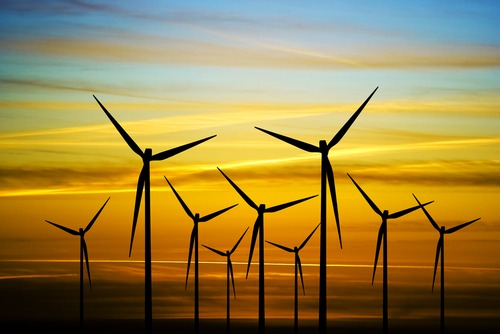AWEA: Wind energy hits milestone, fueled by U.S. public support and low costs

Strong support from the American public for low-cost wind energy has helped the United States hit a milestone of 75 gigawatts (GW) of installed wind power capacity, triple the level seen in 2008, according to the American Wind Energy Association.
“When you look at the polling, Americans strongly support wind energy and want more of it,” Tom Kiernan, CEO of AWEA, said in a recent interview with Daily Energy Insider.
Wind energy supplies five percent of U.S. electricity generation but has become the fastest growing addition to the grid. More wind was added to the grid in 2015 than any other source of electricity, including solar and natural gas.
Recent polls show public support for wind is aligned with the significant growth the industry is experiencing.
Seventy percent of registered voters nationally have a favorable impression of wind energy, according to a new poll of more than 1,000 respondents conducted in August for AWEA, the national trade association for the wind energy industry.
In those parts of the country where wind power generation has grown the most, the levels of support among Americans are even higher. In Iowa, which generates the U.S. record of 35 percent of its electricity from wind, 91 percent of respondents supported wind energy in a poll of likely voters conducted for American Wind Action in July.
In Texas, ranked first in the nation for installed wind capacity, 85 percent of voters favor increasing the use of clean energy to generate electricity, according to an April poll for the Texas Clean Energy Coalition.
A major part of the appeal of wind is that it is a low-cost energy choice. Additionally, costs have fallen for wind with advancements in wind turbine technology.
“Wind energy has declined in cost by two-thirds in the last six years and in some parts of the country wind is the cheapest source of electricity, bar none,” Kiernan said.
Also fueling the positive momentum for wind is significant growth in the number of companies that are buying wind energy.
“It’s not just Facebook and Amazon, the technology companies, but Walmart, Dow, and Procter & Gamble,” Kiernan said. “Some mainstream companies are buying wind energy because they see it as a low-cost solution that is clean with no carbon emissions, no air pollution, no use of water.”
The multi-year extension of the Production Tax Credit in 2015 also was instrumental in bolstering the growth of wind energy.
There are currently 18 GW of wind capacity under construction or in advanced stages of development across the United States, AWEA said. Many utilities are planning to add large quantities of wind energy while the tax credit is in place.
“That’s one of the highest amounts under construction in our history, so we do anticipate the next several years to be very strong years for the industry, building likely from record numbers,” Kiernan said.
Wind power is on a trajectory to supply 10 percent of the nation’s demand for electricity by 2020, and 20 percent by 2030, Kiernan noted – forecasts the U.S. Department of Energy highlighted as part of its Wind Vision study.
Kiernan said that over the long term, the wind industry will need policies that level the playing field with fossil fuels and other sources of electricity as the production tax credit (PTC) diminishes.
“As the PTC phases down it clearly will incentivize, if not require, the industry to continue our cost reductions and to continue our improvements in productivity of the wind farms,” Kiernan said.
